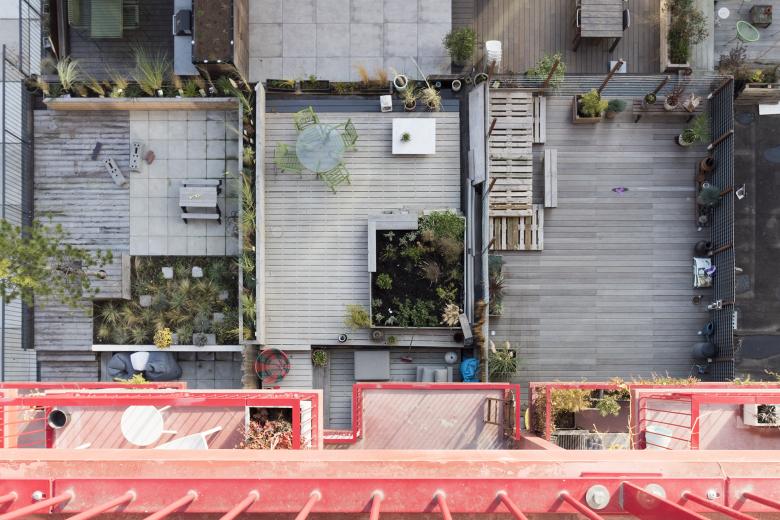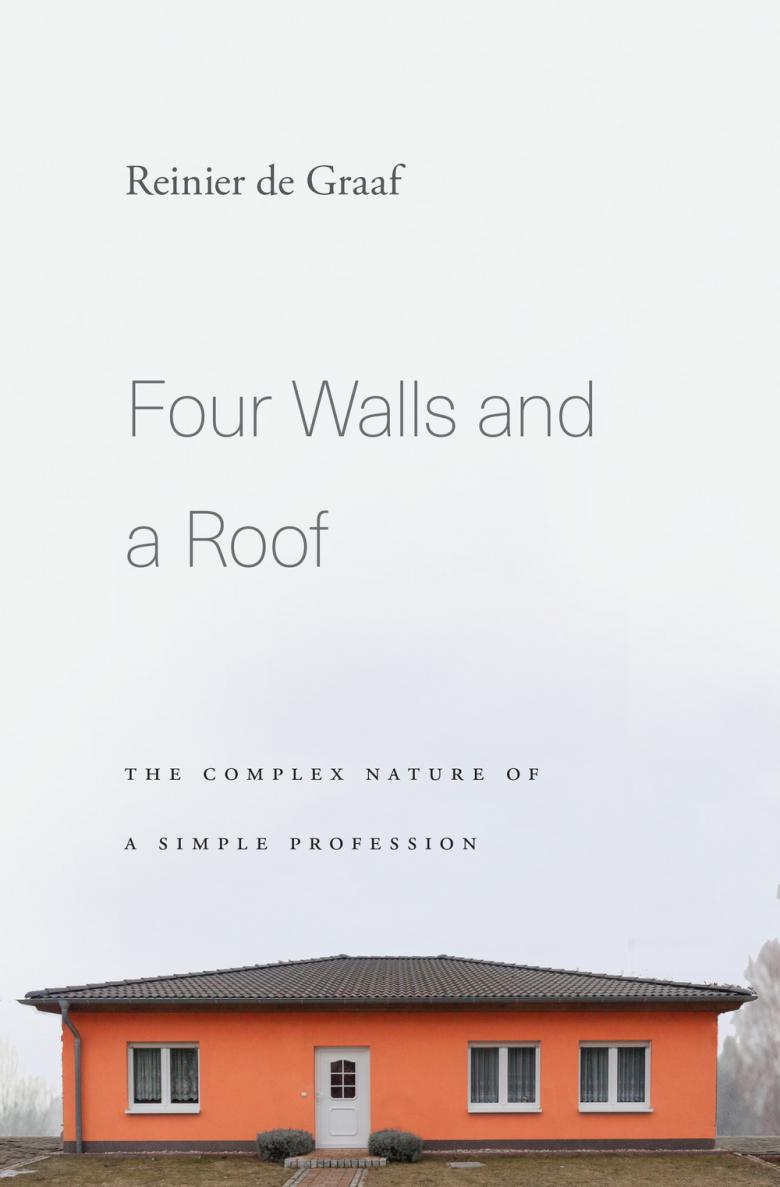WAF in Amsterdam
The 2018 World Architecture Festival took place at RAI Amsterdam over three days in late November. After festivals in Barcelona, Singapore, and Berlin, it was the first WAF in Amsterdam. WAF took advantage of the setting with talks by OMA partners Rem Koolhaas and Reinier de Graaf, the awarding of the first Amsterdam Prize, and tours of buildings in the Dutch capital.
Bookended by OMA
The eleventh iteration of the World Architecture Festival (WAF) began on Wednesday, November 26, with a talk by Reinier de Graaf, partner at Rotterdam’s OMA - Office for Metropolitan Architecture and head of AMO, OMA’s research and design studio that "applies architectural thinking to domains beyond." The talk was titled “What Is to Be Done? Burning Questions of Our Time,” though the subtitle following the question could easily have been, “It’s the Economy, Stupid.” Drawing heavily from his 2017 book, Four Walls and a Roof, de Graaf wasn’t so much interested in capital-A Architecture as he was in the contexts, economic and otherwise, in which buildings are created.
Picking up where architectural manifestos supposedly left off — around 1980, when neoliberalism happened to kick in — de Graaf jumped around the world (Angola, China, Lebanon, etc.) to paint a rather dire picture of humanity in the face of political will and global money. In the end, he argued that since real estate is more important than labor today (“You make more money from having than you make from working”), architects wanting to participate in revolution — a leveling of the runaway economic inequality born from this situation, in which “a horrible class of people could disappear” — they need to create buildings that are the antithesis of the money-making norm: temporary, flexible, humble, designed for demolition. Any look at the OMA buildings designed by de Graaf, such as the glassy, boxy Timmerhuis in Rotterdam's city center, reveals the obvious contradictions in his position.
If the first address of a conference sets the tone for the days that follow, de Graaf’s call for change put the architects in attendance in a funk, a contradictory mix of pessimism and optimism that questioned the integrity of the Architecture vying for awards over the three days of WAF.
Rem Koolhaas’s closing keynote, which took place Friday evening before the gala dinner and the awarding of the World Building of the Year, did little to undo the instability his fellow OMA partner instilled on Wednesday. Slated to have a dialogue with the esteemed Charles Jencks (who was unfit for travel, unfortunately), Koolhaas spoke instead with WAF curator Jeremy Melvin, who was clearly out of his league but soldiered on and managed to draw out many engaging insights from the “icon of the architectural profession,” as fellow WAF curator Paul Finch introduced Koolhaas. The discussion started with dialogues as a way of learning, moved to books as another way of learning and a means of sharing finite bits of knowledge (relative to the infinite internet), made its way into politics, and ended with Koolhaas’s current thoughts on the countryside, which will take the form of an exhibition at the Guggenheim in early 2020, later than originally expected.
Like de Graaf, there was little talk directly about Architecture, but Koolhaas did delve into CCTV Headquarters, his looping skyscraper built in Beijing in 2012. In particular he recounted numerous meetings with around fifty Chinese structural engineers that were involved in the process in order to question and approve the daring design Koolhaas engineered with Cecil Balmond. Koolhaas found this bureaucratic process “beautiful” and asserted that it led to more experimental architecture in China, what would eventually fall out of favor with the country’s leadership. Taking exception to Melvin’s multiple uses of the word crisis (Koolhaas said the ubiquitous crisis label fosters inactivity), Koolhaas ended with his take on the countryside, a place he found “in an almost permanent state of revolt.”
Although Koolhaas has shifted his attention from cities like Beijing to the rural areas they depend on, the many WAF prize winners point to the continued significance of the city and its periphery in contemporary architecture.
The Amsterdam Prize
Moments before Reinier de Graaf argued for revolution on Wednesday morning, ARCAM's Yvonne Franquinet awarded the inaugural Amsterdam Prize, created to acknowledge the best building built in the last year in WAF's host city. Franquinet and fellow judges Aaron Betsky and Nabil Gholam visited four buildings that were shortlisted by WAF: Hotel Jakarta by SeARCH, Wiener & Co by Arons en Gelauff Architects, the University of Amsterdam by AHMM, and the North-South Metro Line by Benthem Crouwel Architects. The last, a subway two decades in the making, took the prize. It was described by the jury as "very outspoken but also very modest in its design [and] realized with stamina and high effect on the city." I took the North-South line repeatedly during my time in Amsterdam and, even before knowing its authorship, found the occasional structural bravado appealing, but not as much as the openness of its stations and the ease in navigating them — a commendable project indeed.
But as the three days of WAF unfolded, I found the Amsterdam Prize troubling for a few reasons. First, the North-South Metro Line did not win in the Transport category in which it was shortlisted; that honor went to London Bridge Station by Grimshaw. Although an Amsterdam Prize victory clearly does not make it an automatic victor against similar projects from elsewhere in the world, this disparity made me wonder about the subjectivity of juries and the fact the jurors of the Amsterdam Prize visited each project, while those in the Transport category made their decision based on the words and images presented by the shortlisted architects. Second, SeARCH's hotel, which did not win the Amsterdam Prize, won in the Hotel and Leisure category. So, if prizes like WAF approach some objectivity in terms of quality, Hotel Jakarta should have taken both prizes; but at least for the reasons spelled out above, it didn't. Third, the Amsterdam Prize and the WAF categories are shortlisted by WAF, in an opaque process that is the antithesis of the crits that WAF delegates can watch unfold over the festival's three days. It's an aspect of WAF that is little discussed, but it determines which architects will attend WAF and if others will buy tickets to attend WAF to hear their favorite architects present.
Although these disparities make sense (juries differ after all, and somebody has to dwindle down submitted entries to a manageable shortlist), it's disheartening to be reminded during a festival of architecture that the process is far from perfect.
Touring Amsterdam
Friday, when the best-in-show winners from various prize categories present their buildings to so-called Super Juries, was a good day to go on one of the many tours offered at WAF. I opted for a tour of Superlofts Houthaven sponsored by Sto, which also sponsors the Architectural Photography Award given at WAF and voted on by delegates. Superlofts is a co-housing concept developed by Marc Koehler Architects in which homeowners buy raw space in a concrete-frame building and fit out their cubic modules as they envision them and are able to. The jigsaw-like Superlofts have been realized in a few places, including Amsterdam's Houthaven neighborhood, where Koehler lives. He opened up the doors of his loft to about twenty WAF delegates.
Although the tour patrons, this one included, were curious about the affordability of the units (they're not very affordable, given that they require €30,000 up front to secure financing plus the costs of finishing the units on top of everything else), they seemed to find the process highly commendable. After all, here is a project that was instigated by an architect rather than a developer, and one that turned the homeowners into the clients/developers. Koehler's own unit, a partial duplex with a double-height living space in front and a master bedroom reached by a spiral stair at the rear, embodies the flexibility of the 6-meter-high lofts and clearly expresses its appeal. It's understandable that, according to Koehler's website, many more Superlofts are in development; the alternative model creates cohesive "vertical villages" where owners have stakes in the project that are deeper than typical condos and co-ops. Visiting Superlofts Houthaven was a high note in a World Architecture Festival that had its share of sour ones. But in the end WAF 2018 managed to select a World Building of the Year that found architects, similar to Koehler, creatively responding to the needs of people and creating another "vertical village" full of infectious optimism.





